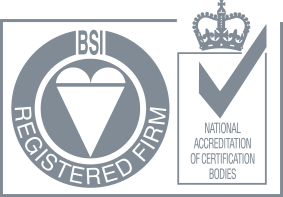
How an app designed to help pilots navigate became a powerful tactical tool due to be rolled out across armed policing in the UK
15 April 2024Pi in the Sky
When William Moore founded Airbox in 2008, he had no idea that the software he had designed would end up as a cornerstone of interoperability for Britain’s emergency services. He admitted that his focus was entirely on aviation, but that all changed when he met Gerry Hill, who came with decades of first-hand counter-terrorism experience. William and Gerry soon discovered that they shared a passion for protecting lives.
“Originally I was just sitting in an office trying to make navigation easier for pilots,” explained Moore. “But Gerry recognised the tactical application of what we had straight away.”
That tactical experience opened the door for Airbox to begin development of their ground-based software and while the aviation function remained its own product, the underlying technology was soon being deployed with police forces across the UK as the MOSAIC and Airbox Track applications.
At its core, MOSAIC provides users with digital maps on a phone or tablet which are stored on the device and therefore don’t require an internet connection to view. Those maps can be overlayed with geo-referenced graphics, embedded with documents linked to specific locations, or even annotated by the user drawing on the screen.
When a data connection is available, those annotations and each user’s location are shared instantly, with users able to select how much of the detail in each ‘layer’ that they want to see at any time, while adding context by securely sharing text messages in groups. Video feeds from a variety of sources, including drones and even consenting civilian mobile phone users outside the network, can also be selected for display in discrete windows, adding to the user’s understanding of the situation on the ground.
The result is a secure, shared, real-time operating picture. It takes only a glance to understand the situation and your team’s place within it.
Airbox Track was a partner application that broadcast its location on a MOSAIC network. Users who didn’t need access to the mapping and annotation could still be tracked, helping MOSAIC users understand the operational picture. Originally designed and deployed to support operations across County borders, its utility was soon recognised and its usage expanded.
“Airbox Track was deployed to all Armed Response Vehicles in England and Wales,” explained Roy Grassie, Operations and Delivery Programme Manager at Airbox Systems. “MOSAIC on the other hand, allows each officer to see the complete operational picture.”
As a former firearms officer himself, Grassie is well equipped to understand the potential for technologies like MOSAIC and Airbox Track to support their work.
MOSAIC is now being procured under a national Police Digital Services framework, to increase interoperability between firearms officers and surveillance teams, and to enable cross-organisational collaboration. The aim of the roll-out is to enable officers to join MOSAIC networks of any other force, providing them a secure environment to coordinate using a common system. With the system already widely used across UK ambulance services and with adoption among fire services increasing, it also provides the benefit of wider interoperability.
“It allows officers to work seamlessly across borders, and increases interoperability with other emergency services,” explained Grassie. “Other emergency services can also quickly begin working together even in developing situations, applying the JESIP principles from the outset.”
Why Firearms?
MOSAIC’s common operating picture is particularly suited to firearms teams, with a multitude of factors specific to their operating environment benefiting from increased speed and clarity of communication. Situations into which firearms officers are deployed are by their nature more likely to be complex and dynamic, with risks that can elevate in extremely short timespans.
The data-sharing and digital tools integrated into MOSAIC reduce the time required to plan and communicate, but also increase the accuracy of information passed and therefore reduce uncertainty, a critical factor in building situational awareness.
“The success of most deployments is in the planning,” explained Grassie. “If you can maximise the quality of the planning while minimising the time spent, you’re setting the conditions for success.”
Being able to see the complete operational picture take shape in real-time at the touch of a screen also provides a feedback loop, increasing confidence that messages have been received as intended and reducing the cognitive burden of all those involved in both planning and conduct.
And given that firearms incidents are likely to attract the greatest scrutiny, the ease with which MOSAIC allows the situation to be monitored throughout the chain of command should minimise the requirement for status updates and reduce the risk of an interruption at a critical moment.

The future
Although the deployment of MOSAIC to firearms and surveillance teams is a big step forward, it is not an end in and of itself, as Moore explained.
“Going back to our roots, our aviation product ACANS is also employed by all Air Ambulances and across the National Police Air Service (NPAS),” he said. “With ACANS already able to join MOSAIC networks, this brings another dimension, more potential sources of intelligence and more capability to the system as a whole.”
And while Airbox Track, MOSAIC and ACANS make up the ‘user-end’ of the Airbox ecosystem, other workstation and web-based software forms a vital link into other emergency control rooms, such as the UK’s Aeronautical Rescue Coordination Centre, and Resilience Direct - the government platform that enables cross-functional collaboration in the planning and response for major civil emergencies.
MOSAIC alone is used to respond to over 200,000 high-threat incidents annually, supporting over 60,000 responders and helping protect and preserve millions of lives. After the planned roll-out, firearms and surveillance teams will benefit not only from the software features, but from access to a well-established and still growing network, capable of connecting their partners across the emergency services in real-time.
The simple fact of being armed amplifies the cognitive burden of a firearms officer responding to any situation – even the most routine. It dramatically increases the number of factors, both legal and tactical, that must be considered in highly contingent circumstances and under intense pressure. The overall aim of MOSAIC is to allow individual firearms officers to completely focus on those factors that are most relevant in the moment, by removing as many uncertainties and distractions as possible.






